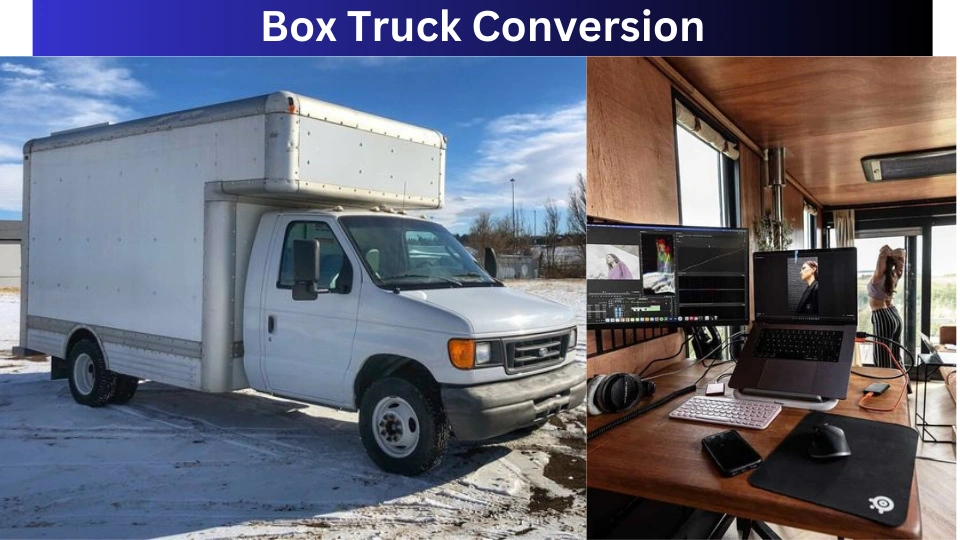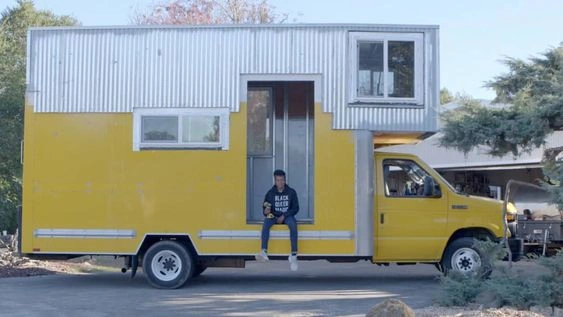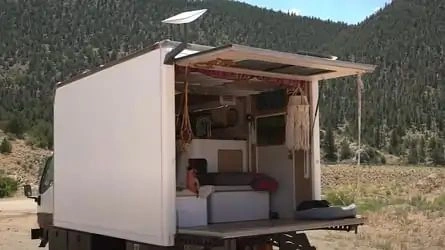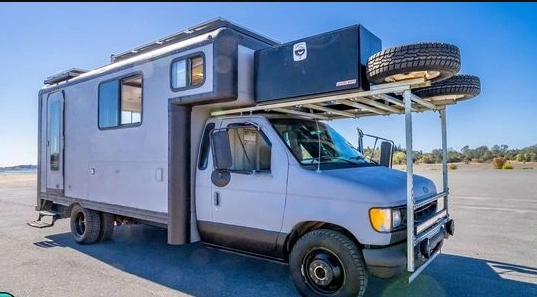Box truck conversions offer a simple way to live tiny. Explore innovative design ideas for both the interior and exterior of box truck conversions, and discover how to transform a box truck into a tiny house in just five simple steps.
If you’re searching for a convenient living solution, a box truck conversion could be the ideal choice for you. It serves as an excellent entry point for DIY beginners and those exploring alternative dwelling options
Table of Contents
ToggleWhat Is A Box Truck Conversion?
Converting a box truck means actively transforming a large truck’s cargo space into a mobile home. While U-Haul vans are often utilized, there are many styles and sizes of box trucks to consider.
Box trucks are naturally divided into two sections, which streamlines the process of building rooms. This aspect makes them great for beginners, as the interior structure is already present. You can actively create anything from simple accessory dwelling units (ADUs) or full-time residences with bathrooms.
The straight walls of box trucks make it easier to actively add insulation, wood paneling, and utilities. Additionally, box trucks offer greater concealment capabilities compared to other conversion types like cargo vans or school buses, thanks to their pre-existing walls. This feature enables easier active hiding of components like roof vent fans or solar panels.
Box Truck Conversions Design Ideas
There are numerous ways to plan the layout of a converted box truck. The primary factor that will influence the design is the existing layout of the truck’s shell.
As this is a conversion project, it’s probable that the box truck already contains certain features that could affect your design choices, positively or negatively.
Box Truck Conversion Interior
The layout possibilities for a box truck conversion largely hinge on its original design. One common feature found in most box truck shells is a sliding door situated at the rear wall, typically used for loading cargo.
This back door can be utilized as a convenient entryway, allowing for frequent opening to enjoy the outdoors. Inside, box truck interiors often offer ample space, often featuring a combined kitchen and living area. Additionally, if space allows, it’s typical to incorporate a loft for sleeping purposes.
Bedroom Sleeping Loft: Arrange raised storage around the sleeping nook for convenience. This can include shelves, cabinets, or a simple rack. Having these essentials within easy reach makes nighttime activities more efficient and comfortable.
Living Room and Kitchen Space: In a box truck, most people connect the kitchen and living spaces. They often position their couch in a corner of the box truck and have it wrap around or place it horizontally against the wall.
Box Truck Conversion Exterior
When selecting a box truck, the exterior appearance will also be determined by the type or style of box truck you opt to purchase and how it’s configured at the time of acquisition.
Box Truck Stairs and Ramps: When designing the exterior of your box truck, consider adding removable or foldable stairs or a detachable ramp. These features actively enhance accessibility to all parts of your box truck dwelling.
Box Truck Wooden Exterior: Decorating part of your box truck with wood can really spruce up its style. You could simply add a wooden finish to the back of the van or deck out all the walls and floors of the entire box truck with warm, inviting wood paneling.
Convert a Box Truck Into A Tiny House In Five Steps
If you’re ready to embark on your own box truck conversion journey, there are a series of construction steps you’ll need to go through. Firm belief lies in the idea that with determination, a readiness to learn, and the commitment to invest the required time and effort, anyone can become a DIY builder.
1: Box Truck Floorplan
Begin by selecting a design and floorplan for your box truck conversion. Ensure that you accurately record the dimensions of each wall on your floorplan, making sure they are to scale. Also, if you intend to include doors and windows, specify their locations in your initial floorplan.
2: Box Truck Conversion
Mark your used van according to the floorplan you’ve created. Utilize chalk, a paint pen, or masking tape to indicate the location of each additional feature inside the van. This involves marking where the bed, sleeping loft, bathroom, and kitchen will be situated. If you plan to modify existing features in the used van, ensure to mark those changes as well.
3: Build The Walls Of The Box Truck
After marking where everything will be placed visually, it’s time to start building. When converting a standard box truck, begin by framing the walls. Use 2” x 4” lumber for this purpose, and attach the wooden walls to the original metal walls of the truck using 3-inch deck screws and PU adhesive.
4: Install Doors and Windows in Box Truck
Now, you’ll install your doors and windows. Use 3-inch deck screws to fasten the door frames to the walls you’ve constructed. Look for pre-hung hollow core doors at local hardware stores for your box truck home.
Similarly, affix the windows using deck screws. Consider using a circular saw to cut holes for the doors and windows.
5: Install Utilities In Box Truck
Once you complete the structural work on the truck, the next step is to install your utilities. Depending on the type of box truck you’re converting, it’s possible that basic insulation, moisture protection, or solar panels are already in place, but this isn’t guaranteed.
Additionally, because you can’t connect your box truck to a permanent water source, it’s important to set up a freshwater tank to ensure access to clean water.
Pros And Cons of Box Truck Conversion
Pros
- Simple to create separate rooms because the space is already divided
- More storage room than cargo vans
- Completely mobile
- Cost-effective Straight edges make insulation and finishing easier
Cons
- Separate driving and living sections
- Need to be in the front while driving
- Lower weight capacity compared to alternative homes
- Susceptible to overheating
- Procuring building materials may pose challenges
Box Truck Conversion Cost
Typically, a basic conversion for a box truck starts at around $45,000. This includes removing the rear roll-up door and replacing it with a wall and regular door for rear access.
It also covers flooring, insulated walls and ceiling, basic electrical work, and simple cabinetry. Box truck conversions for sale, designed to provide comfort and convenience for your mobile lifestyle.
Frequently Asked Questions
What Is A 26-Foot Box Truck Conversion?
A 26-foot box truck conversion refers to the transformation of a standard 26-foot box truck into a custom-designed living space, typically featuring amenities like sleeping quarters, a kitchenette, and storage areas.
What Are The Benefits Of A Box Truck Conversion Camper?
A box truck conversion camper offers versatility, enabling the conversion of a standard truck into a comfortable living space. With this conversion, individuals can tailor their mobile home to suit their unique needs and preferences, crafting a personalized and practical living area on wheels.




